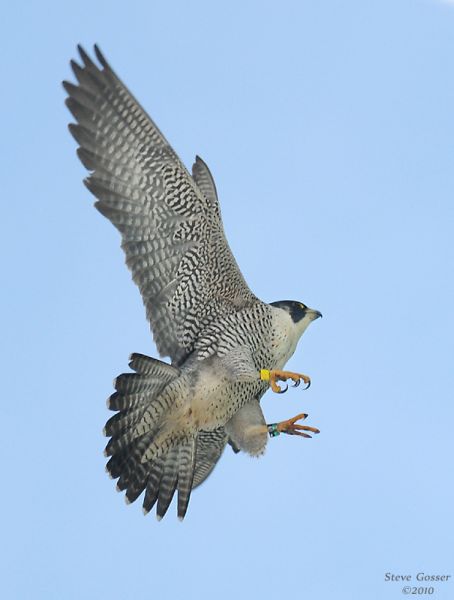
When a bird is on the Endangered Species List wildlife biologists pay a lot of attention to it. When it’s de-listed funding dries up and official monitoring wanes. How can we know a “recovered” species is doing well without official monitoring? Volunteers count! California’s peregrine falcons are a case in point.
This month in ESA’s Ecological Applications, Tim Wootton and Doug Bell compare California’s current peregrine population to the prediction they made in 1992. In the process they highlight the value of dedicated volunteers.
Peregrine falcons were placed on the Endangered Species List in 1970 after they went extinct in eastern North America. By 1975 the U.S. had only 159 breeding pairs so wildlife agencies in many states established reintroduction programs to raise chicks in captivity for release in the wild. California was one of them.
By 1992 California’s reintroduction program was so successful that state wanted to end the program. Would the peregrine population falter without human assistance? That year in Ecological Applications Wootton and Bell published a population viability analysis that predicted the future peregrine population with and without the reintroduction program. It looked like peregrines would be OK on their own.
Fast forward to 2014. How are California’s peregrines doing? Was the model right?
Wootton and Bell ran the analysis again but found that peregrine studies were hard to come by. “The challenge was to come up with data,” said Wootton. “Once a species falls off the endangered species list, there is not a lot of funding to track how management, or lack of management, is doing. There was limited data that was appropriate being collected on the falcon, so we turned to a couple of well-known bird censuses that cover wide geographic areas.”
Enter the volunteers! Wooton and Bell calibrated data from the Christmas Bird Count and Breeding Bird Surveys to the few intensive surveys done by wildlife biologists. Interestingly, the Christmas Bird Count provided the best data. “The greater number of ‘eyes on the skies’ in the Christmas Bird Count was key to obtaining a reliable sampling of the rare peregrines … Mustering many observers lowers the likelihood of undercounting rare birds.”
So how are California’s peregrines doing in 2014?
In 1992 the authors predicted that northern California would perform best because there were some population “sinks” in Southern California where the birds didn’t do well. Thanks to volunteers, 2014’s analysis finds that though the population is lower than hoped for it’s well within the recovery trajectory.
Volunteers, give yourselves a pat on the back! Your bird counts make a difference.
Read more about the study here in Science Daily.
(photo by Steve Gosser)
Exactly why we need more observers at some of our more “remote” peregrine nests. Not just those that are popular because of web cams. A few of the scrapes only have one person regularly observing 🙁